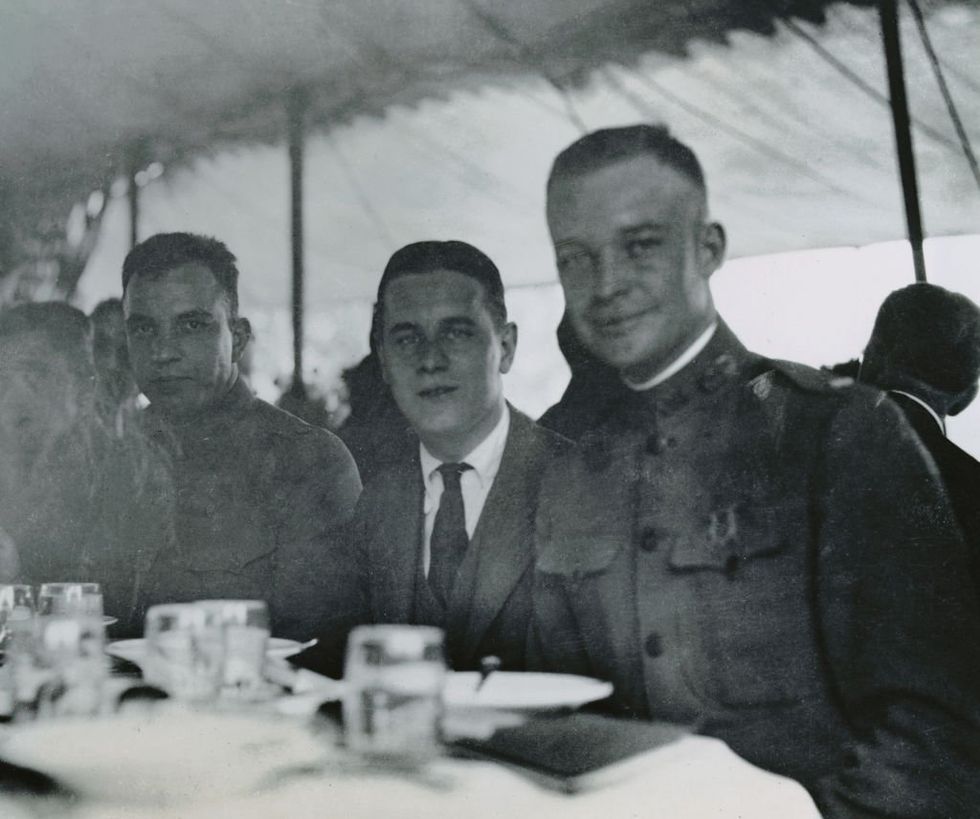
jacoblulnd/Getty Images

You're staring down the barrel of a disgusting yearlong psyop to make you think America is gone. It is not gone. Go see for yourself.
The divergence between what you see and what you hear is about to explode. With nearly 11 months to go till the general election, the country is trembling on the verge of civil war, Donald Trump is about to start murdering generals and shooting people at the White House, and Hitler Hitler Hitler Hitler Hitler.
Watch this amazing mash-up of sober warnings from Very Serious People™ in mainstream media about the Orange Monster preparing to murder and imprison everybody, but be warned that it opens with Liz Cheney. Handle it like a solar eclipse and avoid looking at it directly.
This is what's coming: a blitzkrieg of brutally stupid fearmongering that will escalate like the storm scene from “King Lear.” By next October, America is going to be more terrifyingly dangerous and horrible than the actual ravine at Babi Yar, but only on television. A considerable public discourse will be committed to inducing psychotic terror in the voting population — and I mean literally psychotic, in the sense that the induced fear will break with reality. Sharply.
Seeing the country reminded me that a high-trust society still exists. If you don't know that, go drive around.
It's fake, it will be increasingly fake, and it will work. You can’t soak your neurons in fear chemicals every day without hurting your brain. Aggressive repetition of hysterical terror signals works if you let it in the neurological door. But you don't have to open that door. You don't even have to loosen the deadbolt.
The first way to protect yourself against what's coming is to shut off the television. Think of mainstream media in roughly the same terms you would think of mainlining rat poison, and don't do it.
But the second way to protect yourself is more important, and I beg you to take this seriously: Go to America. Anchor yourself in the real. Take road trips. Go camping. Visit other places in your own country. Know your countrymen. They're worth knowing.
In the last few months, as the hysterical wave of fear-messaging has grown, I've been driving around the country: Kansas, Nebraska, South Dakota, northern Nevada, eastern Colorado, the Texas and Oklahoma panhandles. I discovered something shocking doing all of that, and I hope you'll check it out yourself: America is awesome.
Nearly everybody is friendly, kind, and happy to help a stranger. Things are far from perfect, and the cost of living is a real crisis, but people all over the country are just fine.
I live in Los Angeles, and the way people in small-town Nebraska leave their cars running while they go into the store or the post office is still blowing my mind — with the windows down, ladies and gentlemen, and the keys in the car, and try to imagine my urban decline-trained facial expression right now — but seeing the country reminded me that a high-trust society still exists. If you don't know that, go drive around.
If you read the news, America is experiencing a youth mental crisis, and the problem is that children don't have anywhere near enough access to mental health services. The solution is more government and more pills.
In Humboldt, Kansas this summer, I ate breakfast and watched a group of older children running down Bridge Street together. A boy tripped and fell, hard, scraped up his hands and knees on the sidewalk, stood up with blood running down his legs, shrugged, and went back to running down the street.
You're the future of America, kid, and I'm praying for you. Keep going. The solution to the youth mental health crisis is go outside with your friends.
The solution for adults is not substantially different. Go look for that child and for all the other versions of him. Go meet his parents, his neighbors, and his brothers and sisters. Go to America.
A certain U.S. president infamously said that Americans are bitter losers who cling to their guns and their religion. If you go to the Eisenhower Presidential Library in Abilene, Kansas, you can see the life journey of a leader who tried, consciously and constantly, to see himself and to depict himself as ordinary, a man from and of the people. Go meet this young man:

I cried like a little girl in front of his grave, until an actual little girl wandered in and looked at me like she thought I was an idiot. She may have been on to something.
Speaking of that young army officer, get yourself a copy of a book called “American Road” by an English writer (of all things) named Pete Davies. It's about the summer in 1919 when the U.S. Army decided to see if it could race a convoy of these newfangled motor vehicles from one coast to another, by road, to defend the country. It took a little more than two months, frequently dragging trucks through the mud of the alleged "road" with ropes.
But the convoy personnel's biggest challenge was the way towns greeted them as they crossed the country. No, the commander of the convoy had to explain, we can't stay for any more dances and banquets; we have orders to get to the other side of the country as quickly as possible. They did stop for the occasional truck convoy marriage, though, as soldiers met the locals.
This is America. It's still out there. You're staring down the barrel of a disgusting yearlong psyop to make you think it's gone. It's not gone. Go see.
Chris Bray